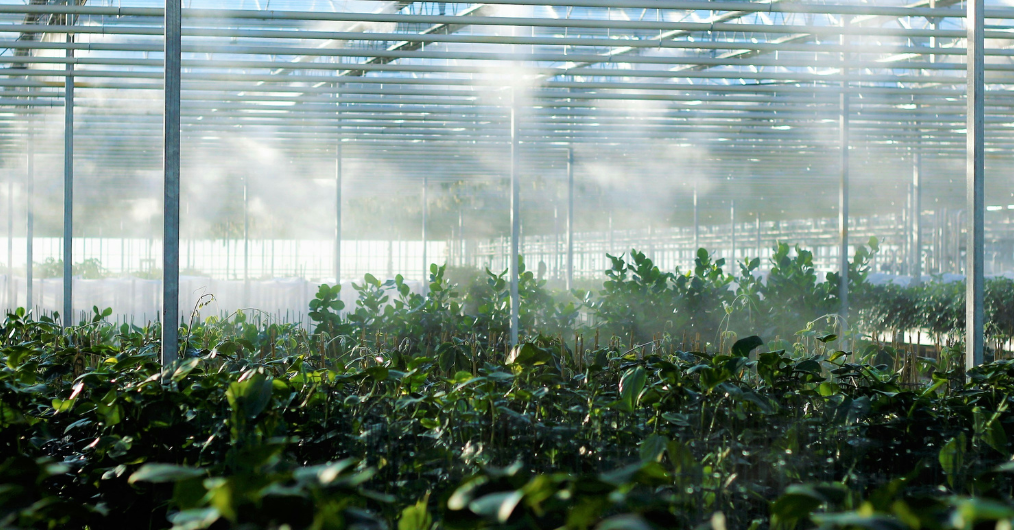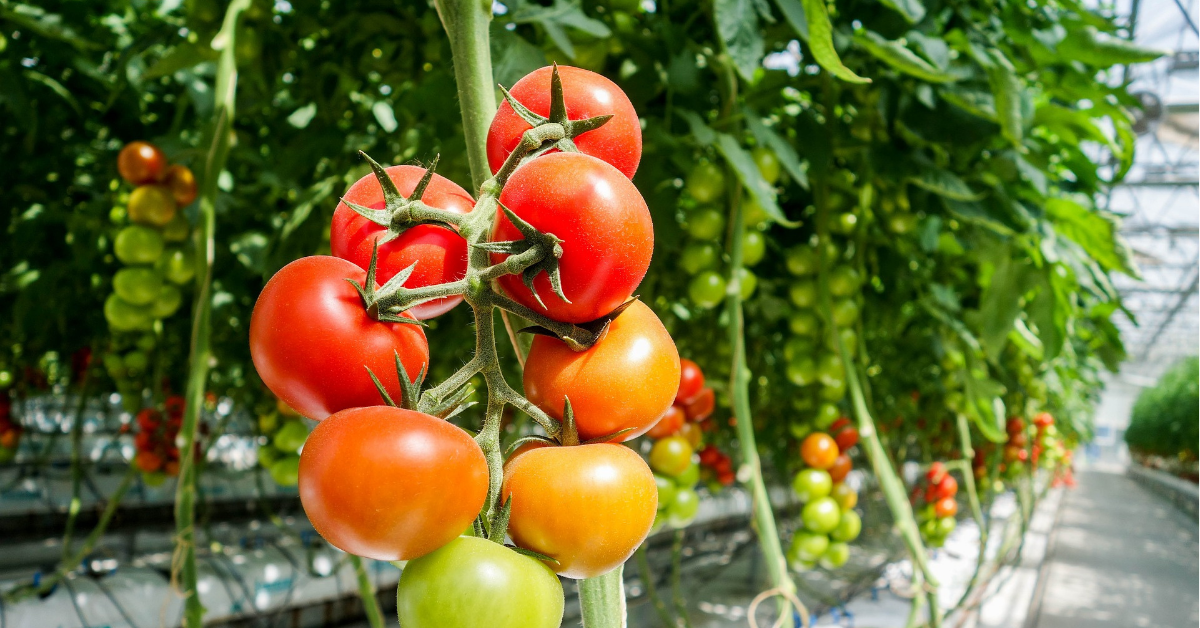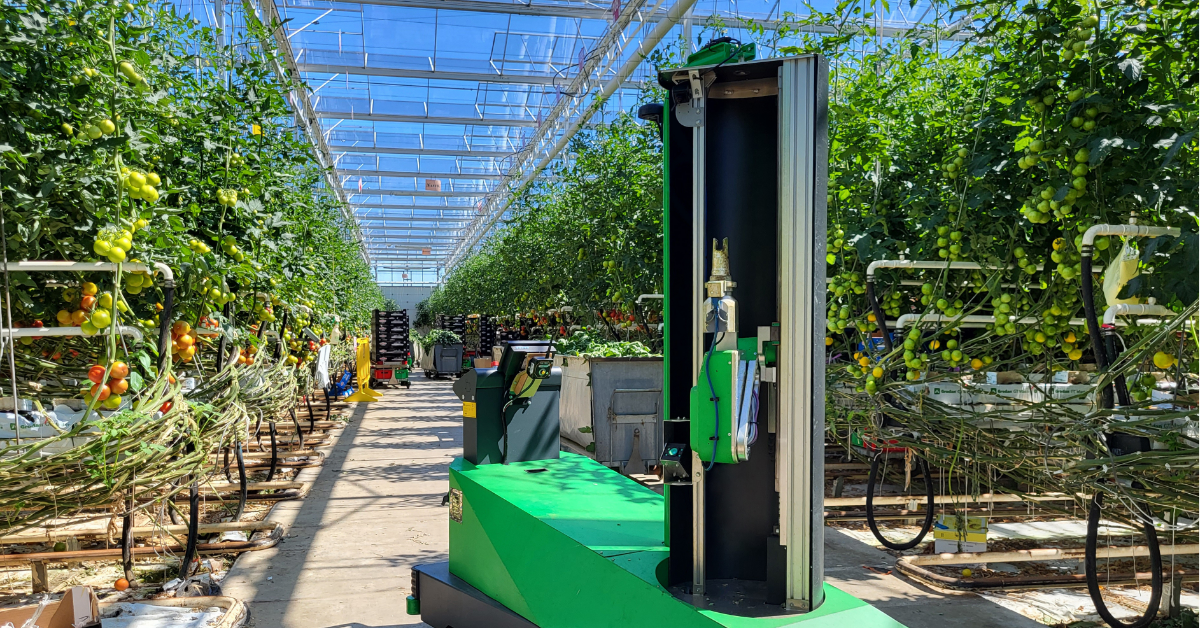‘Clean water also improves quality and taste of product’
Author: Jacco Strating
Tuesday, 25 June 2024
GreenTech is shining a spotlight on the transitions happening in the world today. With numerous challenges such as climate change, water scarcity, and the need for more sustainable practices, the current food production systems are being greatly affected. In a series of articles, we will delve into the challenges and opportunities of these transitions in the horticulture industry. In this article we asked specialist and advisor Peter Klapwijk of 2Harvest and Ruud Schulte of Van der Ende Group about the necessity and developments of water treatment.
Water is an essential element in greenhouse horticulture. But it is not available in unlimited quantities and qualities everywhere in the world. Environmental regulations also increasingly restrict the discharge of water. Therefore, growers must use the water in the greenhouse efficiently and are forced to recirculate their water. This can be done in various ways, with existing techniques being further refined and new techniques being introduced at a rapid pace.
Although water is high on the agenda in horticulture, the importance of good water quality in the cultivation process is still underestimated, says Peter Klapwijk of 2Harvest. Klapwijk was a grower himself in the past but has been active for many years now as a specialist and advisor for growers worldwide. “We still don't know everything about water, but purifying water flows is certainly not only important from an environmental point of view, it is also essential that water is clean and contains sufficient oxygen to grow quality crops.”
Better taste and quality
Klapwijk saw in practice that the quality of water has a major influence on the amount of nutrition that a plant can absorb. “With good water, you simply find more nutrients in the plant. And the more nutrients you get into the plant, the better the resilience of the plant becomes and the better the taste and quality of the product becomes.” According to Klapwijk, growers should pay much more attention to that aspect of clean water. “It is a completely new area of interest, but more and more insights are emerging that growers can benefit from. Yes, it is important for the environment not to emit too many substances. But good quality water really produces a better and tastier product, so that also deserves all the attention.”According to Klapwijk, a plant eats what it likes most. What he doesn't like ends up in the water. “If it is possible to reduce the level of those less popular substances in the water, the nutrient absorption by the crop will also improve. So, there are great opportunities here. In horticulture we have always been very good at being efficient and saving costs, but I think we are now moving to a time where techniques can help us optimize production and quality. Choosing clean and good water can therefore be a good strategy to give your company a strong position.”
Ultrafiltration and reverse osmosis (HPRO)
Recirculation of water is now (almost) a standard aspect of water management in horticulture. It avoids needless waste of expensive nutrients and water. But re-using drain water (and other water) is not without risks. The water that comes back from the greenhouse can contain unwanted micro-organisms, such as viruses, bacteria and fungi. There are various ways to remove these micro-organisms. One of these solutions is the Kathari Ultrafiltration from Van Der Ende Group. Ultrafiltration ensures that essential nutrients in the water are retained, allowing the recycled water to be reused for irrigation without losing valuable nutrients. This contributes to substantial water savings and supports sustainable horticultural practices by reducing dependence on fresh water. Additionally, ultrafiltration protects irrigation systems by removing particles that can cause blockages, enhancing the lifespan and reliability of these systems. Ultimately, this leads to lower operational costs by reducing the need to purchase fresh water and treat wastewater. Other technologies to disinfect the drain water are UV and Ozone. The demand for Ultrafiltration significantly outweighs that for ozone and UV technologies in horticulture. This preference is largely due to Ultrafiltration being 85% more energy-efficient and its ability as a physical separation method to ensure that viruses, fungi, and bacteria are completely prevented from entering clean water. In contrast, UV and ozone treatments are more susceptible to heavy contamination (T10) and may not provide the same level of assurance in maintaining water purity.Moreover, Ultrafiltration systems boast a long operational life, with membranes typically lasting a minimum of 8 to 10 years when used correctly. This durability contrasts sharply with UV systems, where lamps require replacement approximately every year. These factors contribute to lower operational costs over time, making Ultrafiltration a more cost-effective and sustainable choice for horticultural water management. By prioritizing Ultrafiltration, horticultural operations can achieve substantial energy savings, maintain consistent water quality, and extend the reliability of their irrigation systems. This technology not only supports sustainable practices by reducing reliance on fresh water but also enhances overall efficiency in nutrient management, thereby benefiting both economic and environmental aspects of agriculture.
Van der Ende Group from the Netherlands is a specialist in the horticulture water treatment business. The company offers units for a wide range of applications and Van der Ende Group's HPRO technology (High Performance Reverse Osmosis) won the GreenTech Innovation Award in 2020 and is now widely applied. As a water specialist at Van der Ende Group, Ruud Schulte is responsible for commerce and research & development. “Customers approach us because they have a problem with water. To solve that problem, it is important to know what the problem entails, but also what causes the problem. To gain clarity about this, we first map out all water flows on the company. We can often then tackle the problems in a very targeted manner.” Schulte wants to indicate that every problem requires a different solution. “There is not just one solution for everything that has to do with water. Suppose someone uses a lot of well water, tap water or surface water and has a sodium problem. You can then treat the drain water, but it is more important that you determine what causes the accumulation of sodium. In that case, treating the source is wiser. It is not only cheaper, but also more efficient.” Schulte gives another example: “For a grower who is looking to reuse drain water, UV treatment is an option, but ultrafiltration can significantly reduce energy costs due to its low-pressure technique. Additionally, the ultrafiltration system is effective in handling water with high biological contamination, ensuring a clean irrigation system.”
It is therefore worthwhile to first look at what is happening in the greenhouse, which water flows you have and what water quality you are using, Schulte indicates. “Some growers already have a good idea of this, but others are much less concerned with it. For example, because they do not yet have to deal with regulations for discharging water. But even if you are not forced to recirculate water, as is the case in the Netherlands, it can be a good thing. By purifying and reusing the water, valuable nutrients are not lost, which in turn results in savings. We want to advise growers about this.”
Increase level of knowledge
The role of Van der Ende Group therefore goes much further than just supplying products. “We want to advise customers what the best solution is based on our knowledge. And that solution depends on the problem, but also on the type of cultivation, the circumstances and the financial options a grower has.” Van der Ende Group is also a partner of Plant Empowerment. Companies, institutes, growers and organizations affiliated with Plant Empowerment share the goal of strengthening and accelerating the development of sustainable cultivation methods for the global horticultural sector. “On behalf of that organization, I also provide training on water purification to increase the level of knowledge in that area within the sector. So, if people have questions, they can always contact me.”Peter Klapwijk also advises growers to contact specialists such as Van der Ende Group for advice. “These companies have an enormous amount of knowledge about water, so get yourself informed about the possibilities to make the best choice.” The advanced techniques available on the market do require an investment, but according to Klapwijk they are worth it. Although he occasionally also sees less conventional methods. “Consider, for example, the use of nanobubbles in the water, which provide extra oxygen for the plant. Or vitalized water. People sometimes laugh about that. But the purpose of vitalizing water is to better organize the water molecules. To be honest, I can well imagine that applying such a structure to the water can actually lead to better absorption of nutrients by the plant. Every little bit helps, so I would not immediately write off these developments and would certainly look at them seriously.”
At Van der Ende Group, these unconventional developments are certainly monitored and tested, but the focus is mainly on the further development of HPRO, Ultrafiltration and in the near future zero liquids discharge. “Our water treatment department is constantly looking to improve these techniques. Developments are moving very quickly, but we are not there yet. I am convinced that we can achieve so much more in this area.” The company is also working on solutions for properly cleaning surface water that contains a lot of biology. And the treatment of residual water is still in its infancy and will be further developed in the coming years, Ruud Schulte indicates. “And we are currently running a pilot with the removal and reuse of nutrients such as nitrate and phosphate from the water. That solution will be on the market soon.”
Klapwijk also expects that major steps will be taken in the field of water purification in the coming years. “The interplay between substrates, nutrients, water quality and acidity will only become more important. So, we have to dig deeper. There is still so much knowledge hidden underneath the plant. I think we can certainly further optimize cultivation with 15 to 20 percent by continuing to work on the water and nutrient story. There is a great challenge for horticulture as a whole to gain even more knowledge about water and growth.”
Have exclusive horticulture technology news delivered to your inbox
The GreenTech monthly newsletter brings you the latest exclusive horticulture technology news and updates about our global horticulture technology trade shows and events.
Join over 32,000 of your peers and receive:
☑ Exclusive commentary from industry leaders
☑ The latest news from the GreenTech team
☑ Stay up to date with all the latest news about our events




